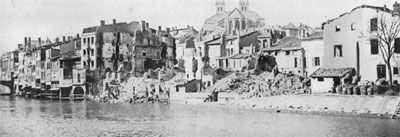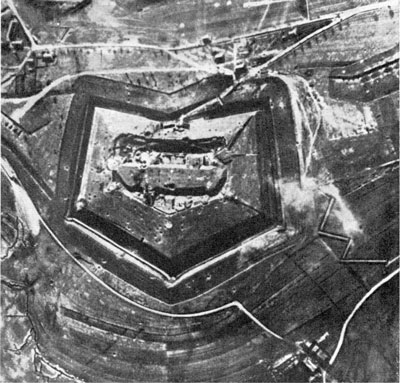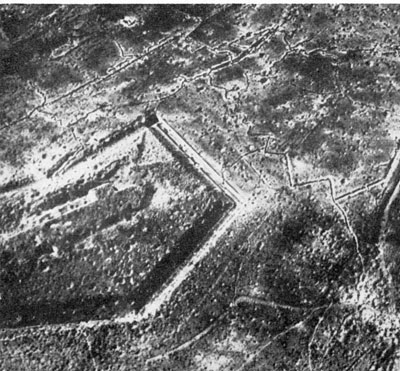
WWII: Maginot Line | Normandy | V-Weapon Sites | Arnhem
Further afield: Crete
| Home Tracing Military Ancestors Travel Advice CWGC Cemeteries Iron Harvest News Book Reviews Glossary Links Contact Me Verdun:
 
|
The Initial German AssaultThere is much debate among historians, even today, as to Falkenhayn's ultimate intentions. By confining the initial attack to the right (east) bank of the Meuse and utilising just nine assault divisions some historians believe that he sought to draw in reserves from other parts of the line and reveal weaknesses elsewhere on the Allied front. What was certain, however, is that the bombardment, when it commenced on 21st February 1916, was unprecedented. French forward positions were obliterated under a massive weight of fire and communications with the rear areas thrown into complete chaos. If the Germans had immediately launched a massed infantry assault, Verdun may well have fallen. Instead, in line with Falkenhayn's plan, fighting patrols together with flamethrower sections were first sent out to probe the French line for weaknesses.
Only on the VII Reserve Corps front, adjacent to the Meuse, did the commander, Von Zwehl, decide to keep his storm troops close behind the patrols. By quickly taking the Bois d'Haumont, Bois de Consenvoye and the village of Haumont, Von Zwehl managed to outflank Driant's positions in the Bois des Caures. On the afternoon of the 22nd Driant was killed trying to extricate his outnumbered Chasseurs from the wood – he became the first French martyr in the Battle of Verdun. Throughout the 23rd and 24th February, the French front continued to crumble. Two divisions hastily brought up as reinforcements on the right bank, the 51st and 72nd, lost two thirds of their strength. A hastily dug defensive line in front of Samogneux and Beaumont was breached and the 37th African Division, virtually the last French reserve east of the river, was split up to present a last-ditch defence before the unprepared forts were reached. Then, on the afternoon of 25th February - disaster. Units from the 24th Brandenburg Regiment of the III Corps, moving into the gap created by the flight of the 3rd Zouaves of the 37th African Division, reached Fort Douaumont. With no fire coming from the fort, several German patrols got through the obstructions of the outer defences, crossed the dry moat and entered the underground galleries. The fort's defenders were found to consist of a handful of second-line territorial soldiers who were quickly taken prisoner. Douaumont, the key to Verdun's defences, had fallen almost without a shot being fired. France had been utterly humiliated.
|


